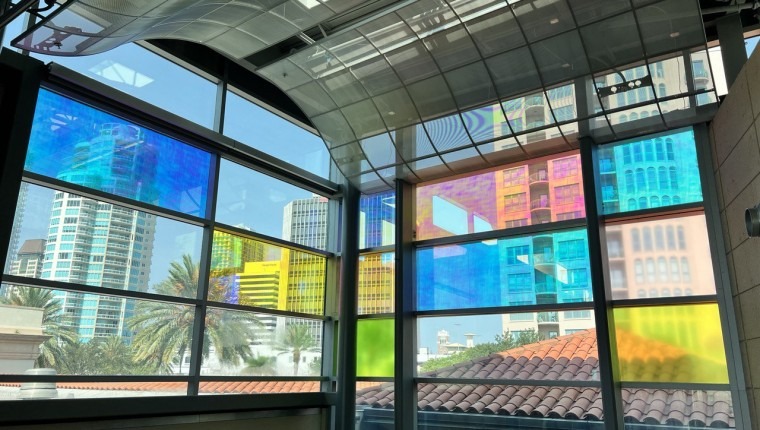“Tempus Volat, Hora Fugit”
is a Modern Monument to Time
Through March 17, 2024
Museum of Fine Arts, St Pete
Details here
Humanity’s been using light to mark time since the Stone Age. Before the development of the Gregorian calendar and recorded history, light shining through windows in prehistoric monuments like Newgrange and Stonehenge marked the changing seasons.
More than 5000 years later, the Newgrange Monument still marks the shortest day of the year. Tourists flock to Ireland’s Boyne Valley every Winter Solstice to witness the morning Sun shine through an opening above the passage’s entrance for precisely 17 minutes – finding its way through a tiny slit under the roof box at Newgrange.
The demand to enter the chamber during those precious 17 minutes so far exceeds the available space that the Office of Public Works instituted an annual lottery in 2000. But even if you win the lottery, there’s no guarantee you’ll see the light. As newgrange.com points out, “Unfortunately, as with many Irish events that depend upon sunshine, if the skies are overcast, there is not much to be seen.”
England’s Stonehenge is similarly popular — fielding more than a million guests annually. But how Stonehenge may or may not mark time is significantly more complicated than the simple Newgrange phenomenon. Archaeologists have argued over it since the early 1700s, when Antiquarian William Stuckley discovered that a horseshoe-shaped row of stones within the monument face sunrise on the Summer Solstice.
The latest explanation, posed by archaeologist Timothy Darvill, and published in the Journal Antiquity in March 2022, suggests that the ring of 30 stones forming Stonehenge’s Sarsen Circle is part of an ancient solar calendar, with each sarsen stone representing one of 30 days in a month.
But according to Daily Mail, even this is subject to debate. That Stonehenge marks the changing seasons, however, is common knowledge to the ~8000 people who visit the monument on the Summer Solstice each year.
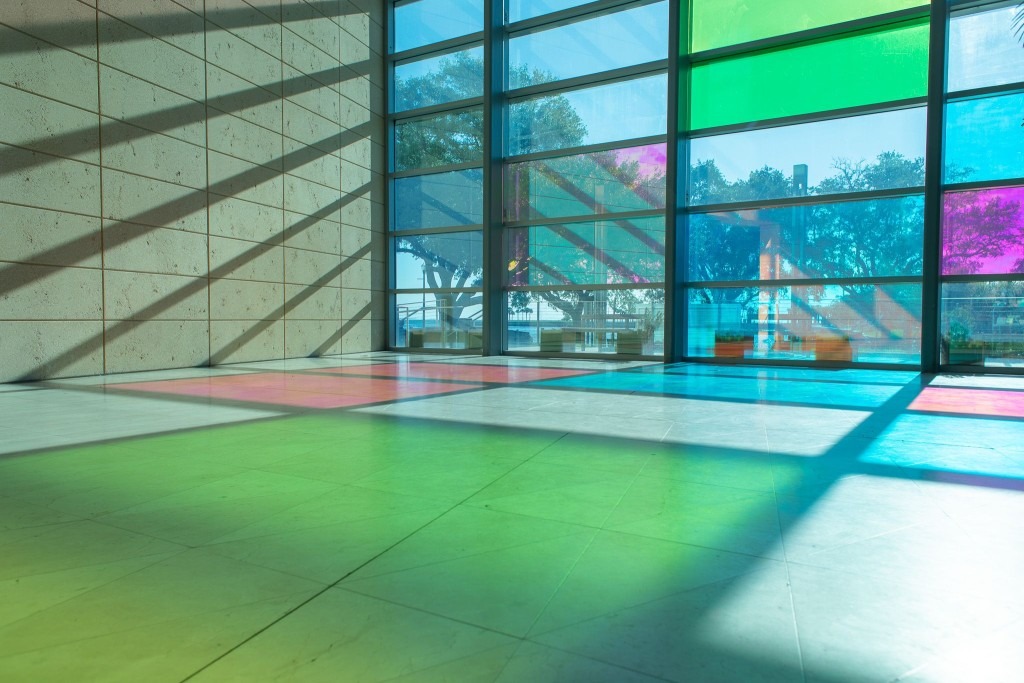
The connection between light and time is both ancient and fascinating. It is also the subject of Christian Sampson’s latest work, Tempus Volat, Hora Fugit, at the MFA in St. Pete. The Latin expression, which translates to “Time Flies, Hours Flee,” is an apt title for an installation that scatters colored beams of light across the MFA Conservatory in accordance with the season and time of day.
On the summer solstice, as artists and art lovers gathered at the MFA to mark summer’s beginning, Sampson spoke of how growing up in Florida shaped his love of light and color. Both feature heavily in Tempus Volat, Hora Fugit, the grid of tinted films that Sampson and MFA staff are installing in sections upon the MFA Conservatory’s windows.

Each season brings a new section. In March, Sampson marked Spring’s beginning by installing tinted films on the MFA’s water-facing east windows, bathing the MFA’s Café Clementine in colored light.
In June, the installation expanded to the MFA’s south and west side windows. The Autumn Equinox and Winter Solstice on September 23 and December 21 will bring further additions to Tempus Volat, Hora Fugit.
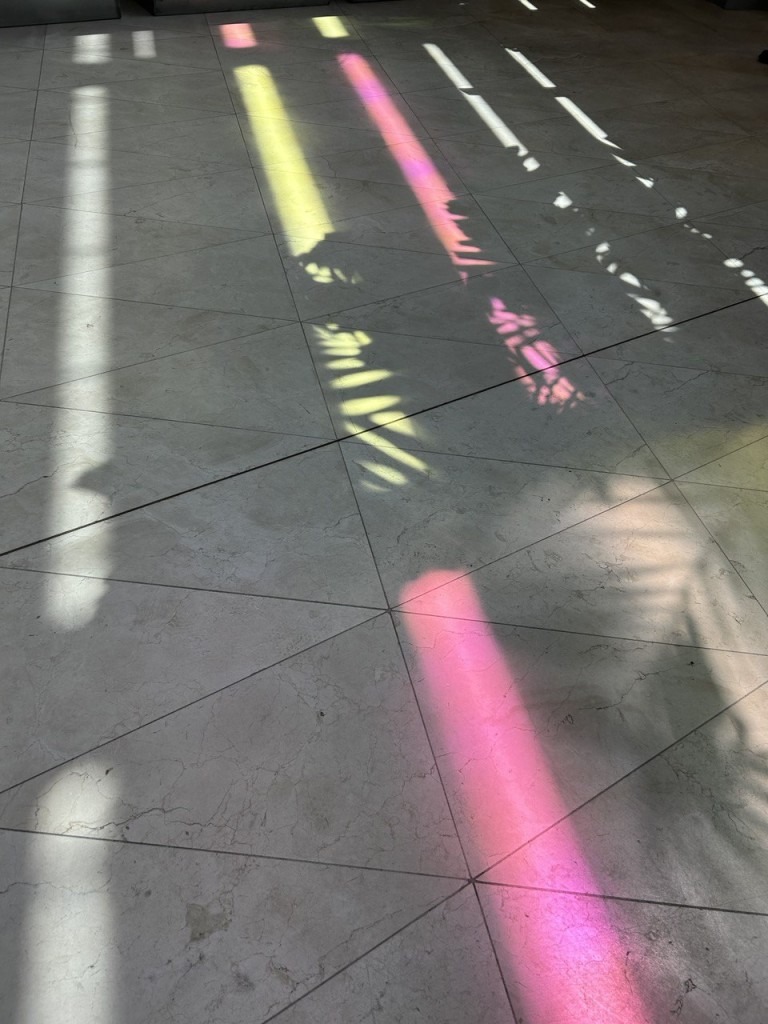
We’ll never know how or why prehistoric farmers constructed monuments like Newgrange and Stonehenge. But it is possible to understand how and why contemporary artist Christian Sampson created his modern monument to time. In this case, all you need do is ask.
“I did site visits and experienced the space firsthand, physically coming into the space, so I could see what 8 am looks like vs. 5 pm,” Sampson says. “Then I went back to my studio and made a maquette, faced the maquette to the east, and began to lay out the windows and see the sort of way the light came through and came into them…”
Maquette is a fine-art term for a small mock-up of a 3D sculpture or architectural project.
“It’s like a miniature model,” says Sampson. “I made a grid similar to the eastern windows and then laid in colors so I could get a sense of how this was going to project.”

Once he has a feel for a space, Sampson orders his materials. Unlike prehistoric farmers, Sampson doesn’t have to start from scratch, gathering stones. Instead, he builds upon previously existing architectural structures, using dichroic films to filter the light that enters modern art museums like the Sarasota Art Museum and most recently, the Museum of Fine Arts St. Pete.
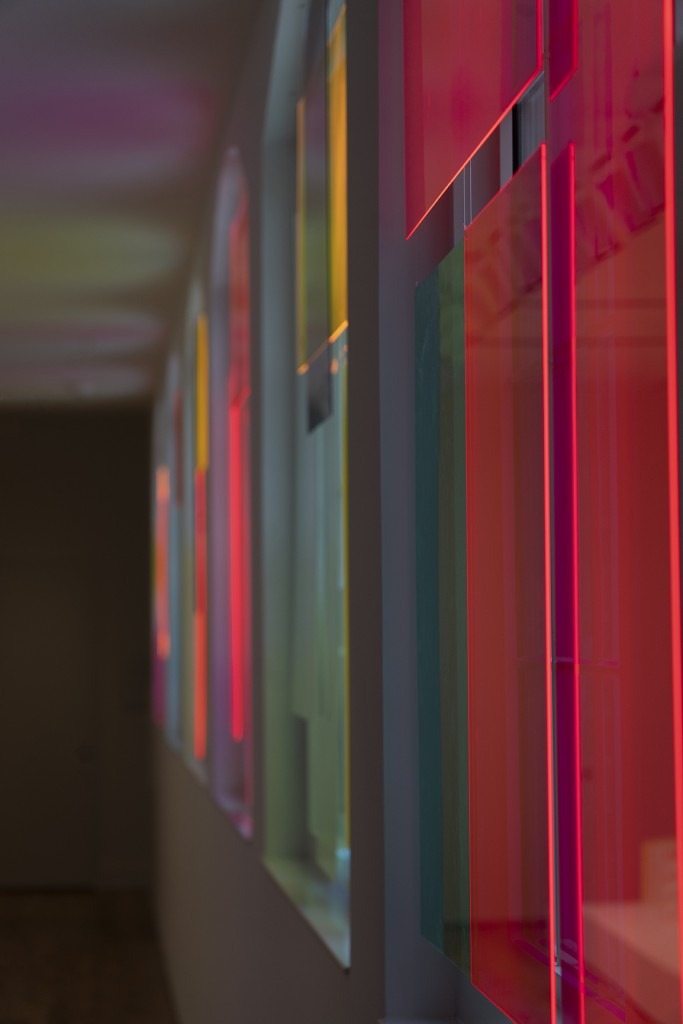
Unlike standard color filters, dichroic films produce different colors depending on the angle at which the light hits them. In the case of the MFA, the result is a colorful grid of color projected onto the Conservatory floor that changes color with the time of day.
I wouldn’t call Sampson’s Tempus Volat, Hora Fugit a clock. It doesn’t fit the modern definition of a clock, and I couldn’t tell time from it. But it’s possible that if I stood in the middle of the MFA from sunrise to sundown, I might eventually learn to guess the time from the color and patterns of light on the MFA’s floor.

As Sampson points out, Tempus Volat, Hora Fugit could be a whole day experience “because the piece is always changing. In the morning, you’ll get the eastern projections of light. During the day, it’s going to move. Then in the evening, you’ll get projections coming through the western windows.”
For me, and for most people who visit the MFA, Tempus Volat, Hora Fugit will mark the moment we visit with a unique pattern of light.
On the day I visited, it was overcast enough to mute the expected patterns of light and color on the MFA’s floor. It’s a not-so-subtle reminder of why people invented mechanical clocks in the first place. Primitive timekeeping devices like solstice markers and sundials cease to work when the sun’s not out, but my Apple watch keeps on “ticking.”
Despite their flaws, earlier, Sun-based methods of keeping time were a celebrated form of functional art. As much as light and time are linked, so are art and time.
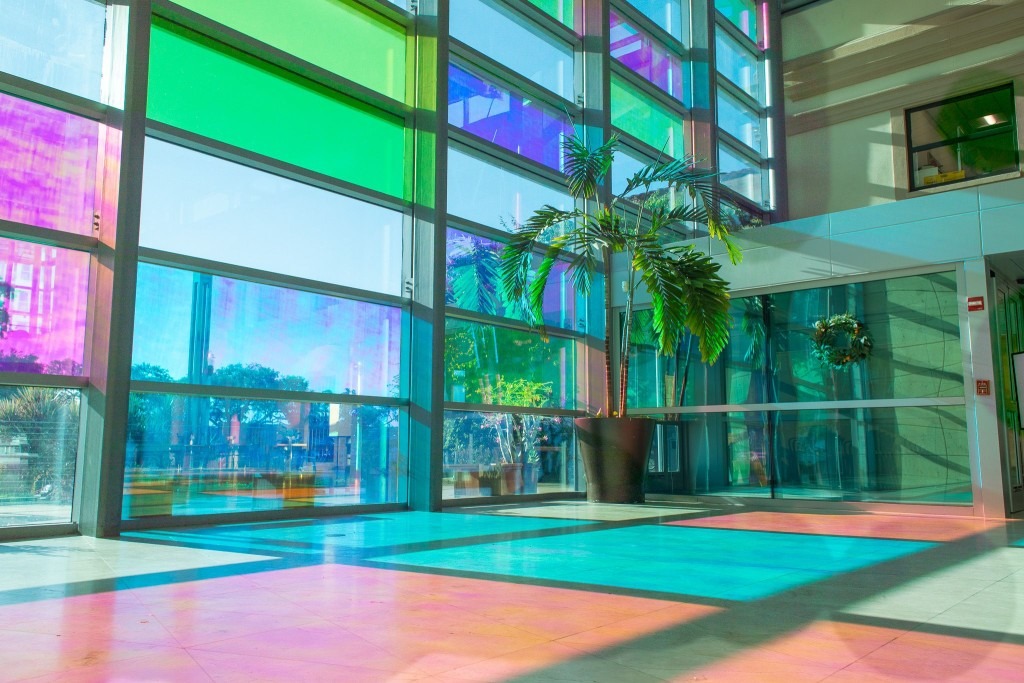
Think of all the decorative watch faces designed for the Apple Watch or the coveted beauty of a Rolex. Consider the number of historic and prehistoric timekeeping monuments counted among UNESCO World Heritage Sites — solstice and equinox markers at Newgrange (Ireland), Stonehenge (England), Machu Picchu (Peru), Chaco Canyon (New Mexico), The Great Sphinx and Pyramid of Khafre (Egypt), and Chankillo (Peru); Swiss watch-making towns La Chaux-de-Fonds and Le Locle; astronomical clocks at Bourges Cathedral, Chartres Cathedral, Lyon Cathedral, St. Mary’s Church in Lübeck, Mantua and Sabbioneta, Maritime Greenwich, Strasbourg, Versailles.
We are a species obsessed with time and beauty.
Sampson’s Tempus Volat, Hora Fugit does far more than add extra color to the MFA Conservatory. It reminds us of ancient monuments to time and what it means to be human.
Museum of Fine Arts
– in the lobby entrance
255 Beach Dr NE
St. Petersburg FL 33701
Tuesday-Saturday 10 am-5 pm
Sunday 12-5 pm
mfastpete.org
